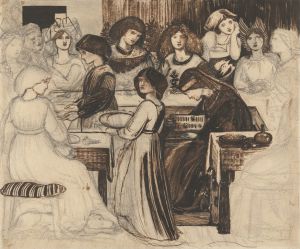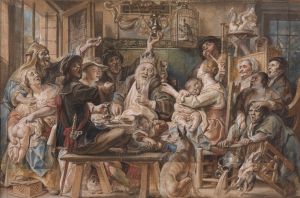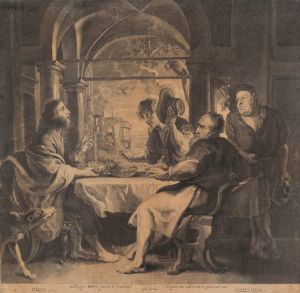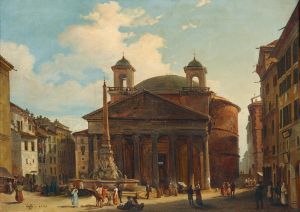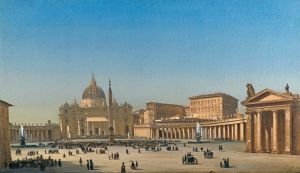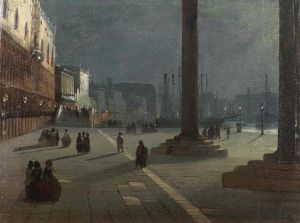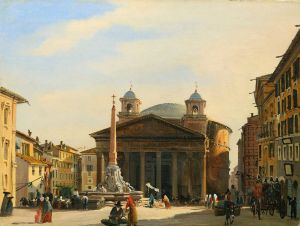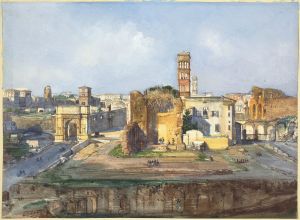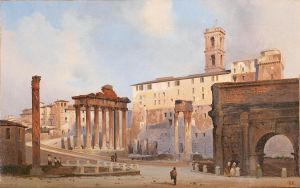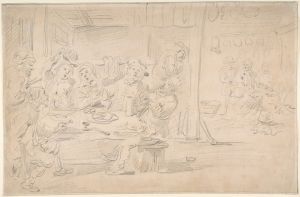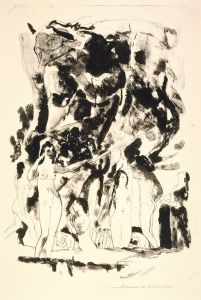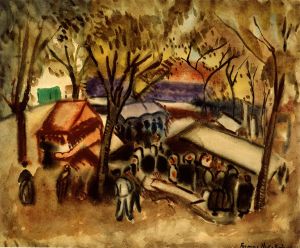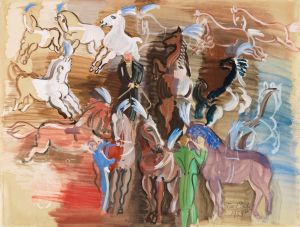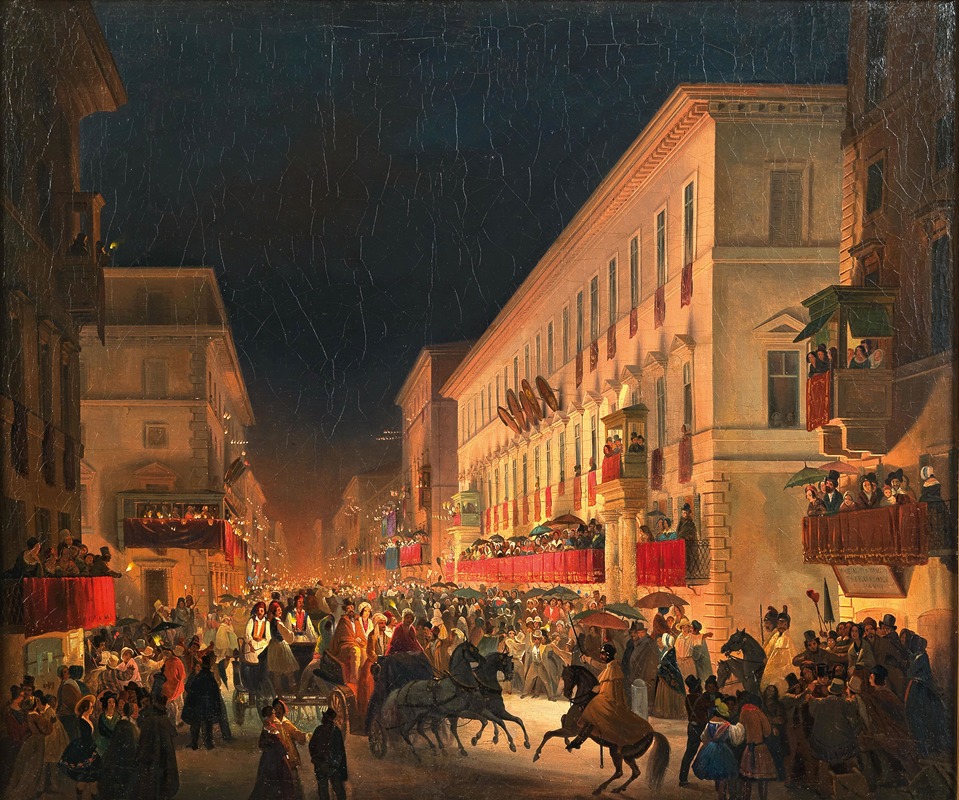
Carnival In Rome, The Feast Of Moccoletti
A hand-painted replica of Ippolito Caffi’s masterpiece Carnival In Rome, The Feast Of Moccoletti, meticulously crafted by professional artists to capture the true essence of the original. Each piece is created with museum-quality canvas and rare mineral pigments, carefully painted by experienced artists with delicate brushstrokes and rich, layered colors to perfectly recreate the texture of the original artwork. Unlike machine-printed reproductions, this hand-painted version brings the painting to life, infused with the artist’s emotions and skill in every stroke. Whether for personal collection or home decoration, it instantly elevates the artistic atmosphere of any space.
Ippolito Caffi's painting "Carnival In Rome, The Feast Of Moccoletti" is a captivating depiction of one of the most vibrant and lively celebrations in 19th-century Rome. Ippolito Caffi, an Italian painter known for his atmospheric cityscapes and scenes of urban life, was born in Belluno in 1809. He developed a keen interest in capturing the essence of city life, and his works often reflect the dynamic interplay of light and shadow, as well as the bustling energy of urban environments.
The Feast of Moccoletti is a traditional event that takes place during the Roman Carnival, a festive period leading up to Lent. The carnival is characterized by its colorful parades, masquerades, and public celebrations. The Feast of Moccoletti, in particular, is celebrated on the last day of the carnival, known as Shrove Tuesday. During this event, participants carry small candles, or "moccoletti," and engage in a playful game of trying to extinguish each other's flames while keeping their own lit. This tradition creates a lively and spirited atmosphere, filled with laughter and camaraderie.
Caffi's painting captures the essence of this unique celebration with remarkable skill. The artwork is notable for its vivid portrayal of the interplay between light and darkness, as the flickering candle flames illuminate the night. The scene is bustling with people, all engaged in the joyous festivities, their faces lit by the warm glow of the moccoletti. Caffi's attention to detail is evident in the way he captures the expressions and movements of the participants, conveying a sense of movement and excitement.
The composition of the painting is carefully crafted to draw the viewer into the scene. Caffi employs a dynamic perspective, guiding the eye through the crowded streets filled with revelers. The use of light and shadow adds depth and dimension to the painting, enhancing the sense of realism and immediacy. The artist's mastery of color is also apparent, as he uses a rich palette to convey the vibrancy of the carnival atmosphere.
"Carnival In Rome, The Feast Of Moccoletti" is a testament to Caffi's ability to capture the spirit of a moment in time. His work provides a window into the cultural and social life of 19th-century Rome, offering viewers a glimpse of the traditions and celebrations that defined the era. The painting is not only a visual delight but also a historical document, preserving the memory of a cherished Roman tradition.
Ippolito Caffi's contributions to the art world extend beyond this particular painting. Throughout his career, he traveled extensively, capturing scenes from various cities across Europe and the Middle East. His works are celebrated for their atmospheric quality and attention to detail, earning him a place among the notable artists of his time. Today, Caffi's paintings are held in various collections and continue to be appreciated for their historical and artistic significance.
In summary, "Carnival In Rome, The Feast Of Moccoletti" by Ippolito Caffi is a vibrant and engaging portrayal of a traditional Roman celebration. Through his masterful use of light, color, and composition, Caffi brings to life the joyous spirit of the carnival, offering viewers a glimpse into the cultural heritage of 19th-century Rome.





